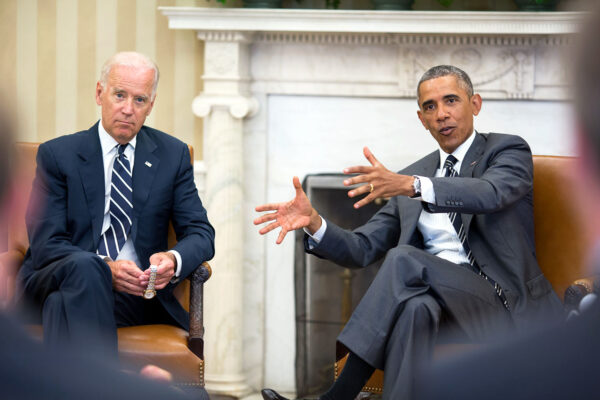
Joe Biden might look out of sync with today’s Democratic Party. 76 years old, Biden is a Third Way-style liberal who used to be “tough on crime”, voted for the Iraq War and now faces his own #MeToo accusations.
Yet he is the frontrunner for the party’s presidential nomination.
RealClearPolitics has Biden’s support at 39 percent, 23 points ahead of the runner-up, Bernie Sanders.
We’re still almost a year away from the first primaries. Polls are not usually predictive at this point in the contest and say more about name recognition. But Biden is also ahead in the endorsement primary, as measured by FiveThirtyEight. The former vice president has already convinced eighty prominent Democrats to support him against 55 for California senator Kamala Harris. (Who I think is actually the second strongest candidate at this point. Read Frank Bruni’s column about her in The New York Times.)
What explains Biden’s popularity?
The party that’s not on Twitter
Political scientist David A. Hopkins gives two reasons:
- The left may be active on Twitter, but it doesn’t represent the entire Democratic electorate. At the mass and elite level alike, Biden draws support from older, more moderate, less digitally hyperliterate Americans. Some of his most prominent endorsements so far have come from party figures like Andrew Cuomo and Dianne Feinstein, who are themselves favorite targets of the hip online left.
- Nostalgia for Obama. The former president’s favorability rating among Democrats is 95-97 percent. More Democrats identify as “Obama Democrats” than as liberals, progressives or any other label. A Biden Presidency would be a restoration.
Nate Silver of FiveThirtyEight gives a third reason: strong union support.
In 2016, unionized workers were essential in helping Hillary Clinton maintain her lead over Sanders. Biden appeals to the same group.
Which brings us to electability.
Win back Trump voters
The short version of the argument is that Biden could win back white working-class voters in states like Pennsylvania, Michigan and Wisconsin who left the Democratic Party in 2016 and handed Donald Trump his Electoral College victory. For the long version, read Ronald Brownstein in The Atlantic.
This is why Trump and his allies already spend more time disparaging Biden than they do any other Democrat. Biden consistently beats Trump in the polls.
White working-class support is not the whole story, though. Biden also has strong support from minorities: he is the first choice of 43 percent of black voters, according to one poll, and 50 percent of nonwhite Democrats, according to another. Obama nostalgia may explain part of this, but blacks and Hispanics also tend to be socially more conservative than liberal urban whites.
Biden is pro-choice and came out in favor of gay marriage sooner than most Democrats, but at the same time he is hardly a social justice warrior and over-the-top political correctness is what rubs both blue-collar Obama-to-Trump voters and middle-income Romney-to-Clinton voters the wrong way. Democrats need all of those voters to win back the White House.
Shaping public opinion
Don’t overanalyze electability either. As Hopkins points out, it’s not that voters develop their sense of electoral practicality from their own intuition. The messages they receive from party leaders and the news media are crucial in shaping their perceptions of political reality.
Given the content of the information environment in which most Democrats have spent the past three years, we shouldn’t be surprised that many of them currently view Joe Biden, rightly or wrongly, as their surest bet to eject Donald Trump from the White House.
